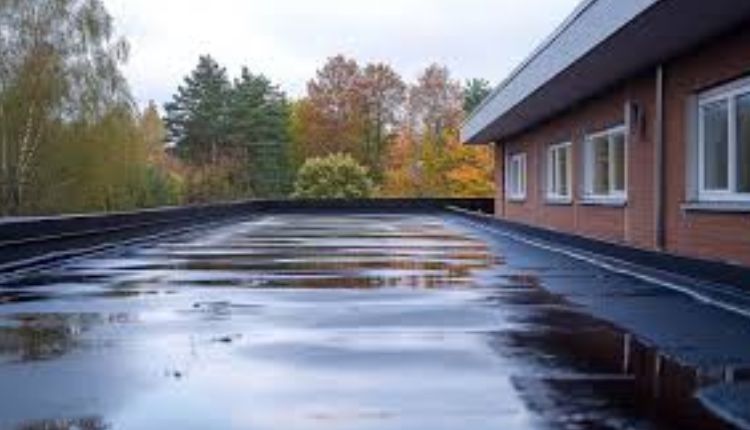Flat roofs present unique challenges that traditional pitched roofs simply don’t face. While they offer excellent space utilization and modern aesthetic appeal, their horizontal design creates inherent vulnerabilities to water accumulation and damage. Unlike sloped roofs that naturally shed water through gravity, flat roofs rely entirely on proper drainage systems and waterproof membranes to keep moisture out. When these systems fail, the consequences can be devastating, leading to extensive interior damage, structural problems, and costly repairs that far exceed the price of preventive maintenance.
The financial impact of water damage from flat roof failures extends well beyond the roof itself. Water infiltration can destroy insulation, damage electrical systems, ruin interior finishes, and create ideal conditions for mold growth. Understanding how to identify, prevent, and address flat roof problems and when to call for professional Flat Roof Repair is essential for protecting your property investment and avoiding emergency situations that disrupt business operations or residential comfort.
Understanding Flat Roof Systems
Modern flat roofs utilize several different membrane materials, each with distinct characteristics and maintenance requirements. EPDM (ethylene propylene diene monomer) rubber membranes offer excellent durability and weather resistance, while TPO (thermoplastic polyolefin) provides superior energy efficiency through reflective properties. Modified bitumen systems combine traditional asphalt with modern polymers for enhanced flexibility, and built-up roofing uses multiple layers of tar and gravel for long-term protection.
The effectiveness of any flat roof system depends on proper drainage design. Unlike pitched roofs, flat roofs must incorporate internal drains, scuppers, or gutters to remove water efficiently. The roof structure typically includes a slight slope toward drainage points, though this grade is often imperceptible to casual observation. Beneath the visible membrane lies a complex system including insulation boards, vapor barriers, and structural decking that work together to maintain building integrity.
Identifying Water Damage Signs
Early detection of water damage can save thousands of dollars in repair costs. Interior warning signs often appear before exterior problems become obvious. Look for water stains on ceilings, especially near the building’s perimeter or around roof penetrations. Discolored or peeling paint, warped ceiling tiles, and musty odors all indicate moisture infiltration. More serious signs include visible mold growth, which poses health risks beyond structural concerns.
Exterior inspections reveal different indicators. Ponding water that remains on the roof for more than 48 hours after rainfall signals drainage problems or structural settling. Examine the membrane surface for cracks, blisters, or areas where the material appears loose or separated. Pay special attention to seams, flashing around vents or HVAC equipment, and the roof’s perimeter where most failures occur.
Structural indicators represent advanced damage requiring immediate attention. Soft or spongy areas when walking on the roof suggest decking deterioration. Sagging sections indicate potential structural compromise, while vegetation growth signals long-term moisture problems that have created soil-like conditions.
Common Problems and Assessment
Ponding water represents the most frequent cause of flat roof failures. When drainage systems become clogged with debris or when structural settling creates low spots, water accumulates and eventually penetrates even intact membranes through hydrostatic pressure. Membrane punctures from foot traffic, falling debris, or mechanical equipment create immediate leak points that worsen rapidly without repair.
Seam failures occur as membranes age and thermal expansion cycles stress the connections between membrane sheets. Flashing problems around roof penetrations like vents, skylights, and HVAC units account for a significant percentage of flat roof leaks. These areas require special attention because they represent transitions between different materials with varying expansion rates.
Professional assessment becomes crucial when multiple problems exist or when safety concerns prevent thorough self-inspection. Qualified roofing contractors possess specialized knowledge about membrane compatibility, structural load requirements, and local building codes. They can also identify problems that untrained eyes might miss, such as inadequate insulation causing condensation issues or improper slope calculations affecting drainage.
Repair Methods and Prevention
Emergency repairs focus on stopping active leaks to prevent further damage while permanent solutions are planned. Temporary measures might include membrane patches, roof cement applications, or tarp installations, but these should never substitute for proper repairs. Professional repairs address root causes rather than just symptoms.
Membrane patching works well for small punctures or tears, using compatible materials and proper adhesion techniques. Seam repairs require specialized equipment and expertise to ensure waterproof integrity. Drainage improvements might involve installing additional drains, cleaning existing systems, or correcting slope deficiencies through tapered insulation systems.
Preventive maintenance provides the best protection against water damage. Regular inspections, ideally twice yearly and after severe weather, allow early problem detection. Keeping drainage systems clear of debris, trimming nearby vegetation, and promptly addressing minor issues prevent major failures. Professional maintenance contracts ensure consistent care and often include emergency response services.
Cost Considerations and Professional Selection
Repair costs vary dramatically based on problem scope, membrane type, and building accessibility. Minor patches might cost hundreds of dollars, while full membrane replacement can reach tens of thousands. However, delaying necessary repairs typically multiplies costs as water damage spreads to structural components and building interiors.
Insurance coverage depends on damage causes and policy specifics. Sudden, accidental damage usually receives coverage, while gradual deterioration from poor maintenance may not. Understanding your policy terms and maintaining documentation of regular maintenance helps support claims when needed.
Selecting qualified contractors requires careful evaluation. Verify licensing, insurance coverage, and manufacturer certifications. Request references from recent similar projects and inspect completed work when possible. Be wary of door-to-door solicitors, unusually low bids, or contractors demanding full payment upfront.
Protecting Your Investment
Flat roofs require more attention than traditional sloped systems, but proper maintenance and timely repairs ensure decades of reliable service. The key lies in treating roof care as ongoing maintenance rather than emergency response. Regular inspections, prompt minor repairs, and professional oversight when needed protect your property investment while avoiding the disruption and expense of major water damage incidents.
Establishing relationships with qualified roofing professionals before problems arise ensures rapid response when issues develop. Whether you manage a commercial building or own a home with a flat roof, proactive care represents the most cost-effective approach to long-term roof performance and property protection.






